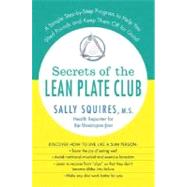
| Acknowledgments | xi | ||||
| Introduction | xiii | ||||
| Part One THE BASICS | |||||
|
3 | (16) | |||
|
19 | (37) | |||
|
56 | (21) | |||
|
77 | (26) | |||
|
103 | (8) | |||
| Part Two THE LEAN PLATE CLUB EIGHT-WEEK PROGRAM | |||||
|
111 | (4) | |||
|
115 | (29) | |||
|
144 | (11) | |||
|
155 | (15) | |||
|
170 | (16) | |||
|
186 | (23) | |||
|
209 | (9) | |||
|
218 | (14) | |||
|
232 | (11) | |||
| Part Three HEALTHY HABITS FOR LIFE | |||||
|
243 | (18) | |||
|
261 | (62) | |||
| Index | 323 |
The New copy of this book will include any supplemental materials advertised. Please check the title of the book to determine if it should include any access cards, study guides, lab manuals, CDs, etc.
The Used, Rental and eBook copies of this book are not guaranteed to include any supplemental materials. Typically, only the book itself is included. This is true even if the title states it includes any access cards, study guides, lab manuals, CDs, etc.
Excerpted from Secrets of the Lean Plate Club: A Simple Step-by-Step Program to Help You Shed Pounds and Keep Them off for Good by Sally Squires
All rights reserved by the original copyright owners. Excerpts are provided for display purposes only and may not be reproduced, reprinted or distributed without the written permission of the publisher.